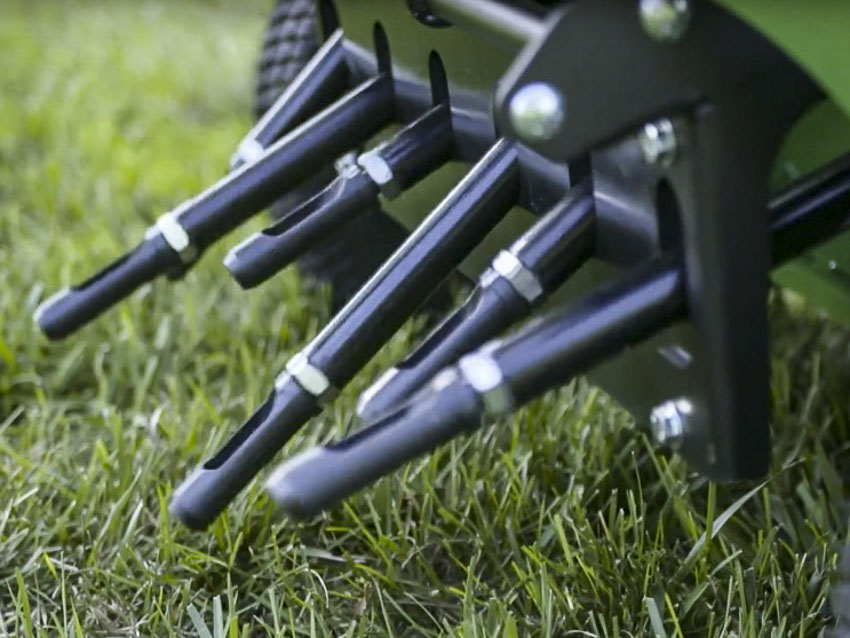You want your lawn to stay as green and beautiful as possible, which is why you take the time to water and fertilize. But, you might notice that, after time, you’re not seeing the desired results. It could be that your soil has compacted, keeping water and nutrients from penetrating into your grass’ root systems. Aerating your lawn can help open the soil back up, letting those nutrients get to where they need to be to allow your grass to flourish.
What is Aeration? Compaction and Thatch
Compaction happens when your soil becomes firmly pressed together. It generally happens in higher-traffic areas, like sports fields, playgrounds, and other recreational areas. Lawns that have new construction built on them will usually wind up with some to a lot of soil compaction.
Compaction can also occur when your soil composition includes a high amount of clay. For lawn in areas like Louisiana and Texas, this will be pretty common.
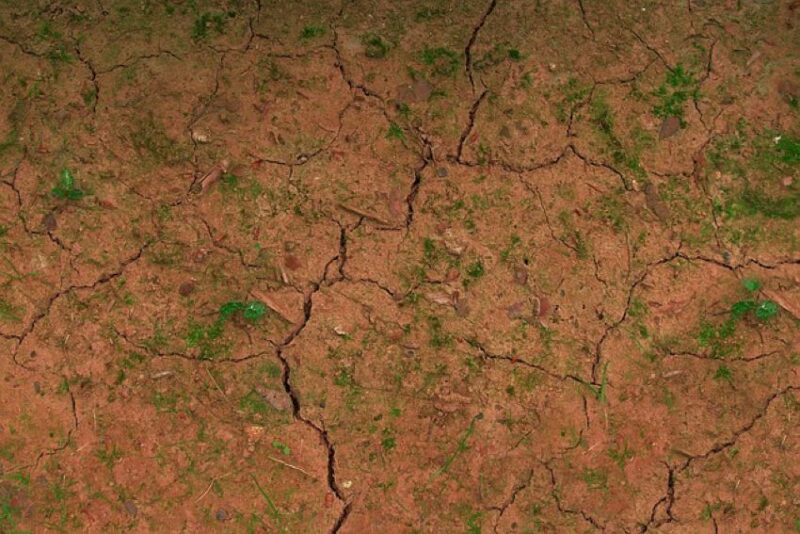
Diagnosing the Problem
The problem with soil compaction is that it doesn’t allow water, oxygen, or nutrients to easily reach the roots of your grass. Dense soil also constricts root movement and growth. If your roots can’t reach the things they need, your grass will suffer.
Similarly, an overabundance of thatch can choke out your grass as well. Thatch is an accumulation of dead grass clippings, shoots, and stems that form along the top layer of your lawn. It forms a barrier between your grass blades and the soil.
A little bit of this is actually good for your lawn as its decomposition delivers nutrients back to the soil. However, it can become a problem if it becomes too thick. Too much thatch blocks air and water from reaching the soil.
Do You Have a Problem that Requires Aerating Your Lawn?
Thankfully, it’s pretty easy to tell if aerating your lawn would help and if you have compacted soil. Patchy, unhealthy-looking grass with bare spots indicates that water and oxygen aren’t reaching your roots. If your plants don’t seem to grow, or your trees have shallow root systems, you have a clear sign that the soil is constricting root movement. Excessive puddling and water running down from higher areas in your lawn also indicate that your soil isn’t absorbing the water.
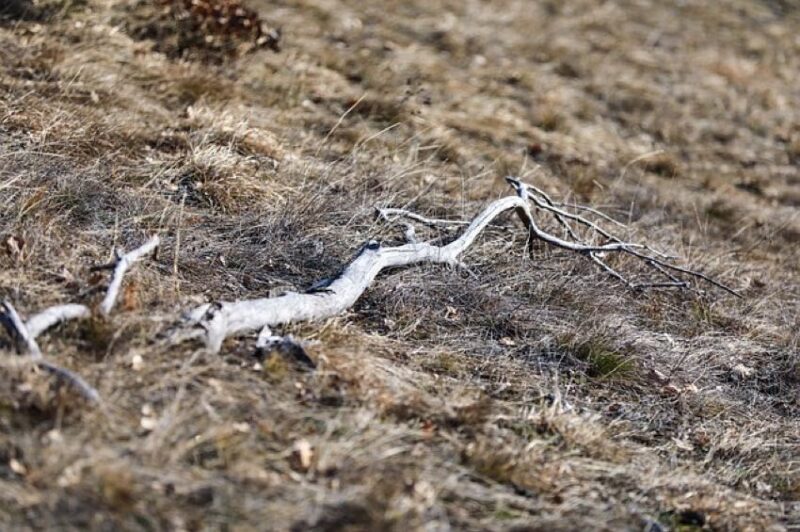
You can tell if you have an overabundance of thatch fairly simply as well. Walk on it with bare feet; healthy lawns feel soft but firm, while thatchy lawns feel spongy and springy.
You can also feel your lawn using your fingers. Too much thatch is anything more than a half-inch layer, so if you can insert your finger past your first knuckle, you know that your thatch layer is working against you.
Thankfully, aerating your lawn can help with both these issues.
Breathe…Let the Healing Begin
Basically, aerating your lawn involves punching holes into the soil to break up that compaction and thatch. This allows oxygen and water to absorb back into the soil, as well as giving fertilizer a fighting chance at getting down into the root system. Effective aeration loosens soil enough to let roots and earthworms move more freely. It also lets new grass seeds germinate.
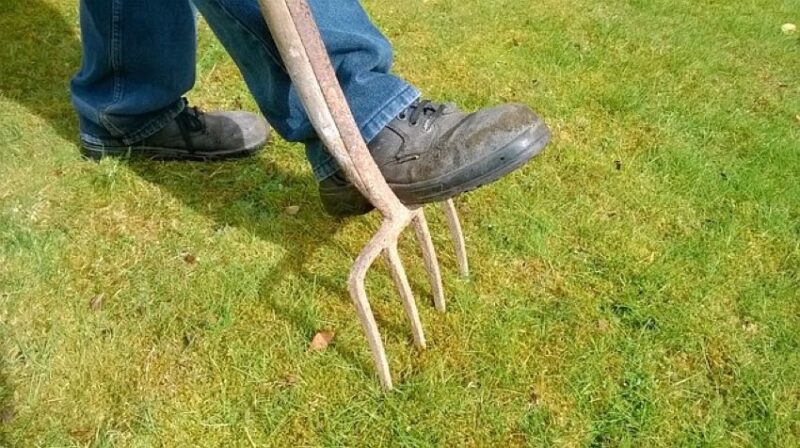
Manual Solutions
We have a few common ways to go about this process. You can either use a core aerator or a spike aerator.
Spike aeration is probably the simplest and cheapest means of aerating your lawn. The required tools can take a few different forms.
They make spiked shoes, pitchforks, and spiked rollers designed to roll across the lawn. The spike aerator pierces holes in your lawn, breaking up thatch and compacted soil.
Another option, slicing aerators, swing rotating blades through the thatch and soil to loosen it up. Slicing aerators are also generally inexpensive.
Core or Plug Aerators
Some people doubt the overall efficacy of these first two methods, instead opting for the core, or plug, aerator. Rather than simply piercing or slicing the soil, the core aerator uses a system of probes to punch into the soil and remove finger-sized plugs of earth. The plugs are discarded across the top of the lawn to break down and deposit their nutrients back into the soil. These tend to be the most effective form of lawn aeration as they create channels for water and fertilizer to seep into.
Aerating Your Lawn: When and How
The common wisdom surrounding when you should go about aerating your lawn looks pretty simple. Aerate your cool-season grasses in the Fall and your warm-season grasses in the late Spring. If you’re not quite sure what type of grass you have, resources like Scotts.com can be helpful.
For those of you who have healthy lawns, most Pros recommend aerating once a year. Lawns that struggle with compacted soil and thatch issues can benefit from aeration at least twice a year.
For lawns that don’t necessarily have compaction problems but could stand a good dethatching, tools do exist that will dig out the overgrown layer of thatch from your grass.
Preparations for Aerating Your Lawn
Regardless of which tool you choose to use, the steps surrounding aerating your lawn remain the same.
First, you’ll want to make sure that your soil is damp. You can ensure this by watering your lawn a few hours before you plan to aerate.
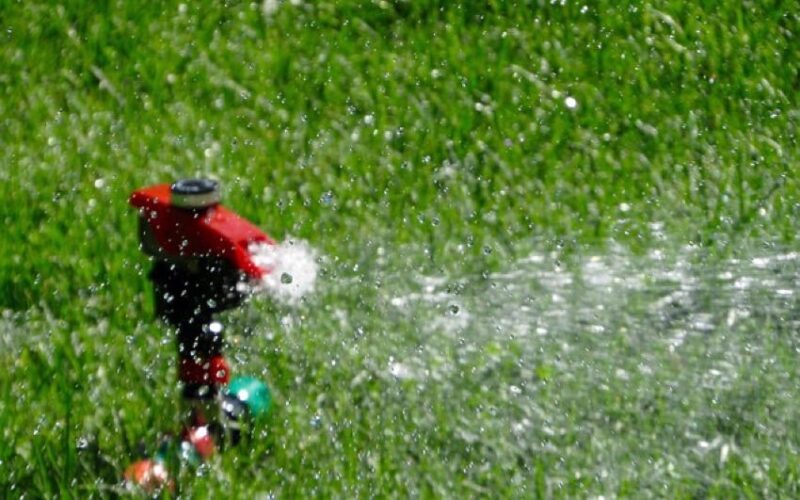
Secondly, make sure you’re aware of where your sprinkler heads are located. Likewise, locate any utility lines or plumbing in the area. Avoid aerating over top of those areas, as the last thing you’ll really want to do is inadvertently puncture water or cable lines.
Third, get to work aerating your lawn. Carefully go over each section like you would if you were mowing your lawn. For areas where the soil shows signs of heavy compaction, you may choose to go over it twice, but you’ll want to aerate these areas in a different direction to create more holes.
After aerating your lawn, you’ll want to water it again. Applying fertilizer or new seeds is an option for quicker recovery here as well.
The end result of aerating your lawn is healthier grass with fewer weeds. And, with the right tools, aerating your lawn doesn’t have to break your back or take an unreasonable amount of time.

